The ocean is silent; rising lines creep toward a sleepy fishing bay. Barefoot, in a dark blue fleece sweater and khaki shorts, a grey-bearded man sits next to his teenage son on a weathered park bench.
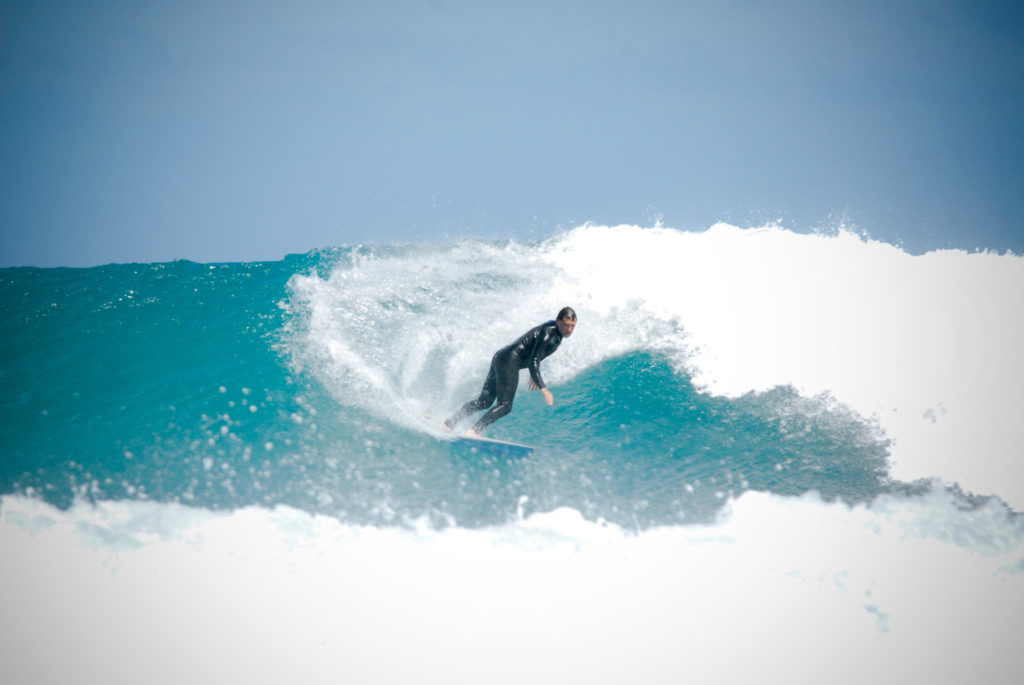
They watch closely as the bay begins to awaken. Suddenly a four-foot high wall of water rises skyward, pausing momentarily as it rolls into a perfect tube, and then—boom!
“Wow, that was a fast one,” Wayne Lynch says to his son Jarrah with a laugh.
Wayne was just a teenager himself back when surfing was transitioning from longboard to shortboard. The Australian surfing hero was a pioneer of the wild south coast of Victoria, and his imaginative passion for the sport made him one of the finest surfers and board shapers around. He is a private person, and we were fortunate to spend some time with Wayne and his son.
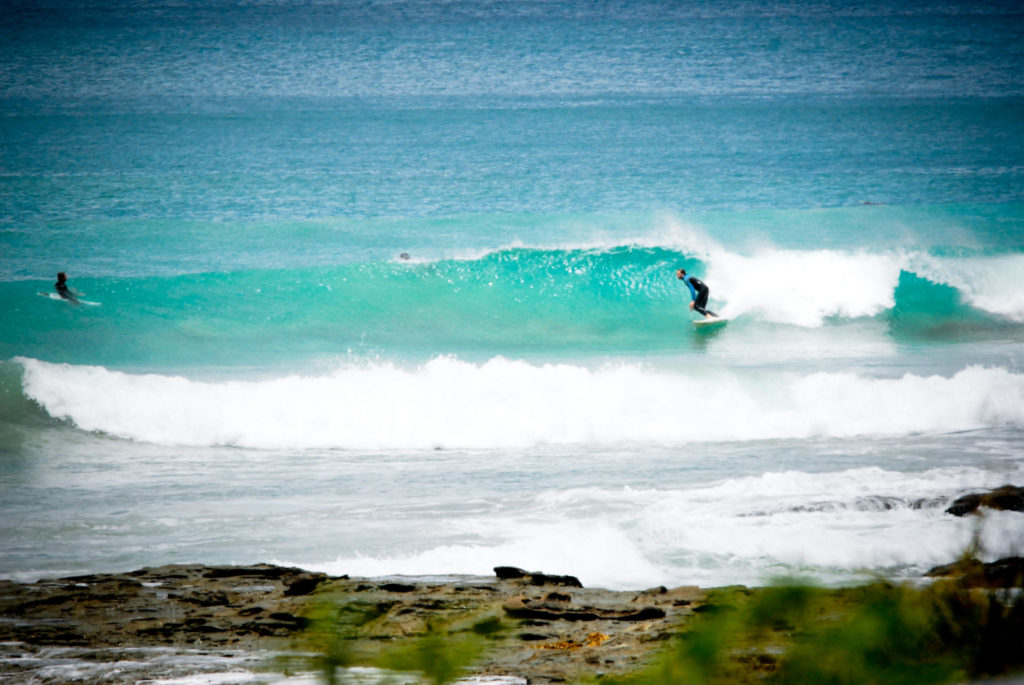
Angie Takanami: I hear you’ve been to Japan a few times?
Wayne: Four or five times. I’ve been down to Shikoku, around Tokyo a bit, and up north where I stayed with a family of fishermen. They couldn’t speak any English and I couldn’t speak any Japanese, but I used to go out fishing with the dad. I lived with them for a week. It was very cold, I remember.
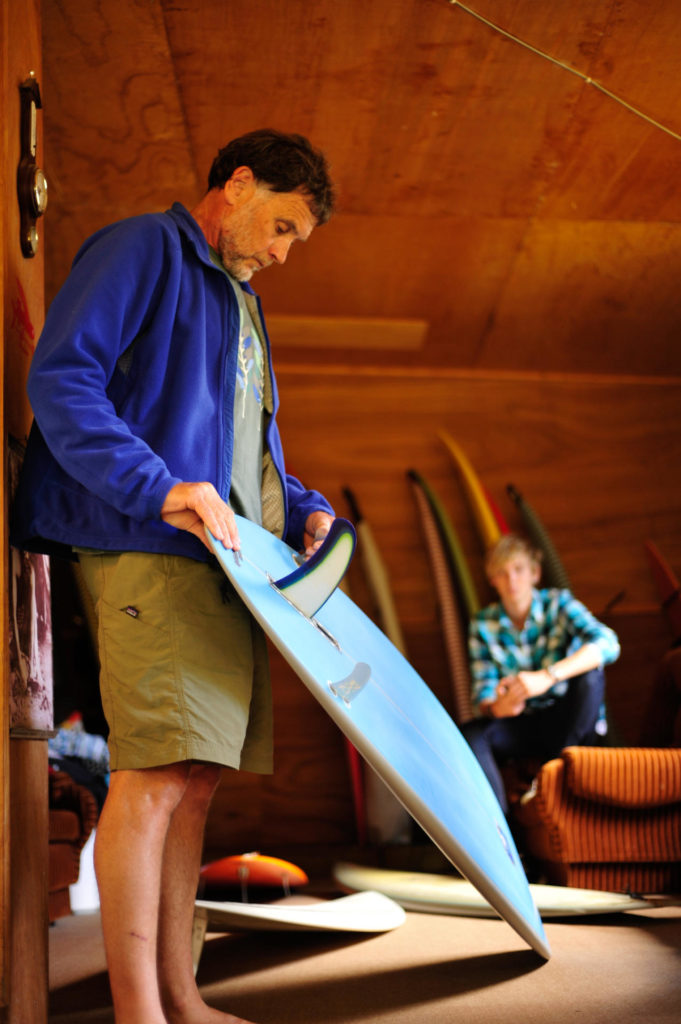
A: Why did you stay with a Japanese family?
W: I wanted to see old Japan and the people, how they really live. Surfing (professionally) is like living in a bubble. You go to all these countries, but you’re in the same bubble experiencing the same things. People rarely get outside that bubble, and I hated that.
A: Did you score any memorable waves in Japan?
W: Oh yeah, Shikoku was really good. Mellow locals dedicated to their surfing life. I didn’t surf around Tokyo. There were hundreds of people in Shonan, wall to wall. It wasn’t for me. I told the guys I wanted to go somewhere it wasn’t crowded, so we drove up the coast about an hour and a half. There was no one in the water, so we had a surf, but soon there were a hundred people there. They’d followed us up the coast.
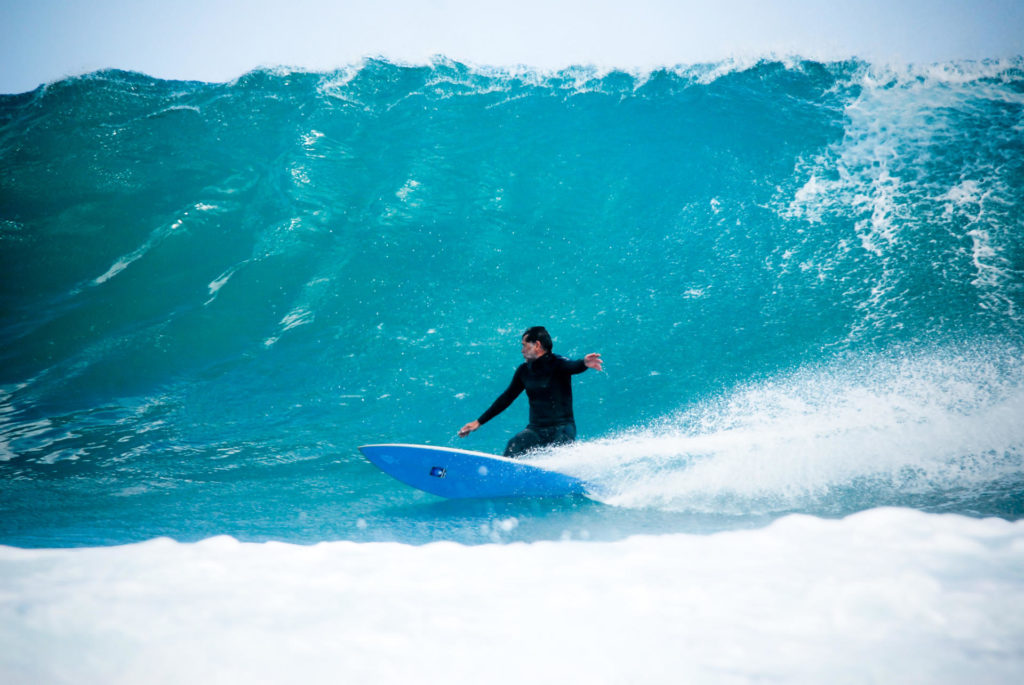
A: Was that back when you were on the pro tour?
W: Yeah, a long time ago! (laughs)
A: You were on the tour while still a teenager, but quit while you were still young. Why?
W: By 18, I had seen enough. It was unreal. I got to travel the world, and it was the best thing that ever happened to me. I look back on that time of my life with enormous appreciation. But I also saw the other side early on.
A: The “other side?”
W: There’s no adventure, no real interaction. It’s like you have to be a rock star.
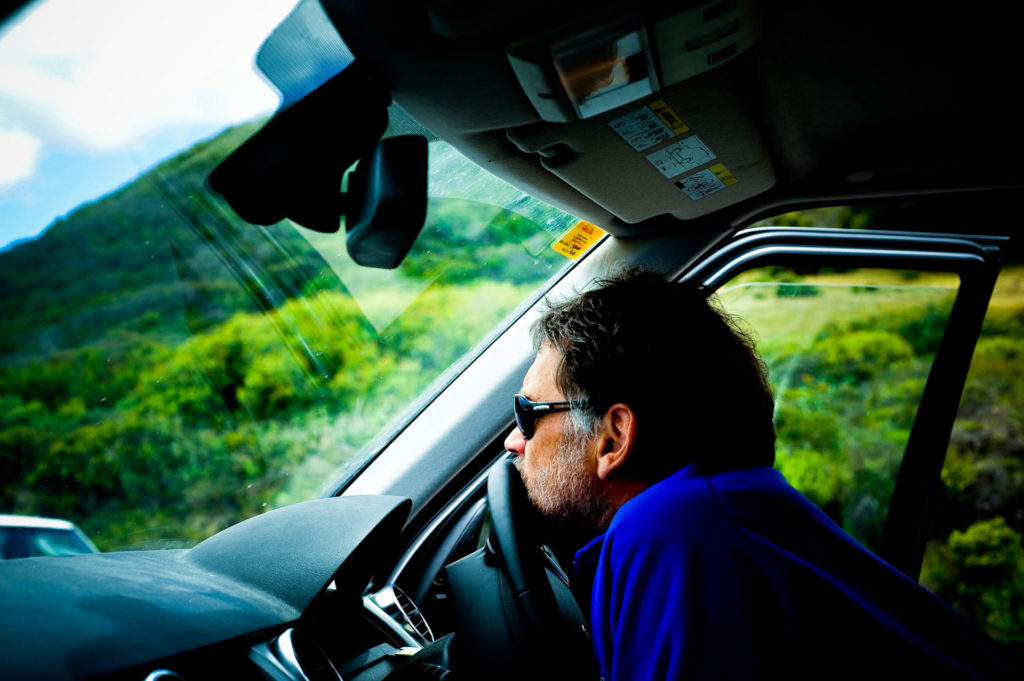 A: So what’s your idea of adventure?
A: So what’s your idea of adventure?
W: Just going to beautiful, wild places. Get on boats if I can—I sail a lot. Just get off the track.
A: You signed on with Patagonia a few years ago as their Australian Surfing Ambassador…
W: Patagonia was always a company I looked at. The fishermen in their catalogues, the gear they wore was really old. They were documenting people’s lives and making gear that fits their lifestyle. It’s such a straightforward thing. That principle is behind much of what they do.
A: After working for major surfing brands your whole life, was it a big change?
W: It was like the other brands didn’t want to present surfing to the public as it really was. Yvon (Chouinard) is a very clever man. He laid down the template and I don’t think the other (established) companies can change to that degree, but developing companies can. The conservation issue shifts people’s consciousness.
A: Your name has been associated with single-fin boards since the ’70s. What are the good and bad aspects of them?
W: The single fin is very fast—fantastic speed—and very free in its own way. But, like all boards, it has its limitations. You don’t get quite the grip on the rail. When the wave’s a bit flat, they’re not as alive off the top, you can’t get that lift out of the fins. In bouncy, choppy conditions, the board tends to be running fast, and that’s when it’s hard to get a grip on your rail when you’re turning.
A: How similar are the single fins you are making now to the ones you were riding in the ’70s?
W: Very similar. Same template, just a little bit different in the rail and the rocker. The boards I was shaping in the ’70s, the wide point was way back (toward the tail). They were very thin, with a big, round tail, and the front was narrower than the tail. It meant I could stand back on the board and surf off the back; they felt like a shorter board. They were seven feet, 10 inches long, but they felt like a six-foot, 10-inch board. But the new ones definitely go better. When the wave is really steep, it’s fantastic on the takeoff and beautiful in the tube…what the young guys call “the barrel.” I still ride “tubes,” but Jarrah and his mates ride barrels (laughs).
A:What makes you want to pick up a single fin over a normal thruster (today’s more common three-fin design)?
W: For the most dangerous or most difficult takeoff, I ride the single fin. If you are lucky to have a range of surfboards, it’s really about the different conditions and how you feel. Some days I don’t want to have the single-fin feeling.
A: Do you like a fluid style of surfing?
W: To me it has to be one movement from start to end. It’s the heart of it, because there is a rhythm to surfing, then spontaneity to your movements. When you look at nature—the way the wind blows a tree—it’s always a fluid movement. What singles out Kelly Slater is how he’s linked all his surfing together. Other people can’t replicate the power and rhythm he has.
A: Looking at what you were doing in the ’70s, was your success a combination of this state of mind and good equipment?
W: Oh yeah, but back then making a good board was a fluke. I didn’t know what I was doing, not even a little bit. We were making it up, and not that well sometimes. I went through periods where my surfing fell apart because I didn’t know what elements of the surfboards worked, so I couldn’t reproduce them.
A: Machines have become a big part of the surfing industry; do you still shape by hand?
W: Not always, but mostly. When the machine does the boards, they’re a lot thicker and bulkier. I don’t like to just finish a board that’s been made by a machine. It’s not as satisfying—it’s not shaping, it’s finishing. Everyone thinks the machine copies a board exactly, but it doesn’t. I spend a lot of time on the boards; I’m very slow. I take hours. They feed me under the door, like in prison (laughs).
A: Do you still surf every day?
W: I don’t like to surf too much. It becomes like a habit, and I don’t like that feeling. Maybe two or three times a week is good. Plus, when you get older, it becomes more demanding. Your back aches, your shoulders, your neck. It hurts (laughs). There’s more to life than just surf. I like to sail; there’s a lot to it.
A: Has sailing always been a part of your life?
W: I grew up sailing and my family members were fishermen. Many older-generation surfers were sailors, or did trips through the Pacific. A lot of the old guys out of Hawaii and California were sailors and boat designers. Surfing is a lot more one-dimensional these days. People only think about surfing, perhaps because of the pro circuit. Sailing is hard; you have to be very strong, and sometimes you’re up all night. You have to concentrate, and it’s easy to lose your boat. But, I just love it. You continue to learn new things as long as you are alive. Surfing after a while isn’t like that.
A: How have you coped with the growing crowds along the Victoria coast?
W: It’s only been in the last six or eight years that it’s gotten crowded. Down south is still quite a wilderness, but the early years down there were really quiet. It was fantastic. But, like everything, it’s become more commercial. The surfing population has expanded so much down here. All of us who grew up here hate it. The sense of community has been shattered. The housing prices go up so much that people can’t buy anything and generations can’t stay, and there are so many laws, rules and regulations. When I was Jarrah’s age, this place was so free, it was amazing. That’s why I sail—to get away. Sailing on this coast is like the surfing used to be. No one does it because they’re scared of it. It’s big, gnarly and windy. In the early years of surfing around here, you searched for someone else to surf with. You’d be terrified some days, because it was quite sharky. A lot of people thought I liked surfing by myself, but that’s not true. I’d be begging guys to come out or at least sit in the channel. The other reason I don’t surf as much is it’s just too crowded. Not just the crowds, but the attitude: too aggressive, competing for waves. We grew up in such ideal conditions that people took their turn, there was no pressure. You surfed with people, not against them, and you knew each other. You looked out for each other and made sure someone was OK if they lost their board.
A: How about a good wipeout story?
W: Down here, about two miles out to sea, waves about 20 feet. I spun around late to catch a wave and freefell, landed on the wave and skidded. It broke on me and threw me into the air. I went forward and rolled, but all that energy had a hold of me because I hadn’t gone underwater. I just held on and held on—I thought I was going to die for sure. You know how you read about people seeing a white light? I went through that whole thing. Then I popped back up onto the surface, and the board was right beside me. I spent three months out of the water, all my back; muscles, nerves were shot. When I saw someone to get fixed up, he said I looked like someone who had been in a head-on collision. It was a long time ago, 1974 or ’75. It took me ages to work out what happened at the end of that white light. The end was like, you’re going to live, you are going back. And, yeah, I popped back.
A: And that didn’t put you off surfing?
W: Nah. It’s just life, you know. You can’t give up something because of an accident. You just become a bit wiser and more settled.
A: Most would say you are a surfing icon. Do you feel like a celebrity?
W: My life’s nothing special if you saw how I live. I hardly have any situations where I’m aware of it. I’m a so-called “legendary surfer.” I’ve always had a distrust of celebrity life. It just doesn’t seem authentic, and I don’t like the attention.
A: Any plans from here on?
W: To go somewhere new and pristine. I’ve seen the results after things are exploited too much. Suddenly there are thousands of people, agro in the water, and they build tourist parks and surf camps. I’m not really against all that, but I just don’t like creating it. I just love the wild untouched life. That’s where I go. That’s what I do.
Wayne Lynch Profile
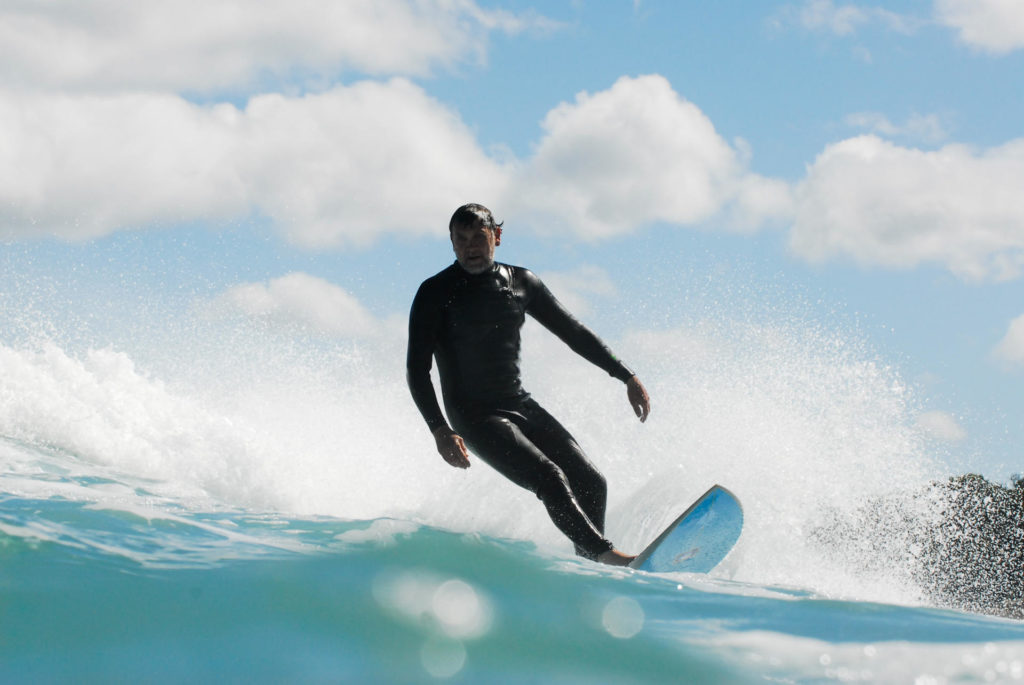
Born in 1951 in Lorne, Victoria, Australia.
Won the Australian Junior Surfing Championships from 1967 to 1970.
A teenager during surfing’s groundbreaking transition from shortboards to longboards in the late ’70s, he developed fluid, carving tracks in a figure-eight style.
Although successful in competition, he’s most famous in surfing circles for his laid-back, love-of-surfing-for-its-own-sake approach to the sport.
Master surfboard shaper whose early designs were sought after in the 1980s and ’90s; he recently released a line of modern single-fin boards based on his boards from the ’70s.
Patagonia Australia Men’s Surfing Ambassador.




